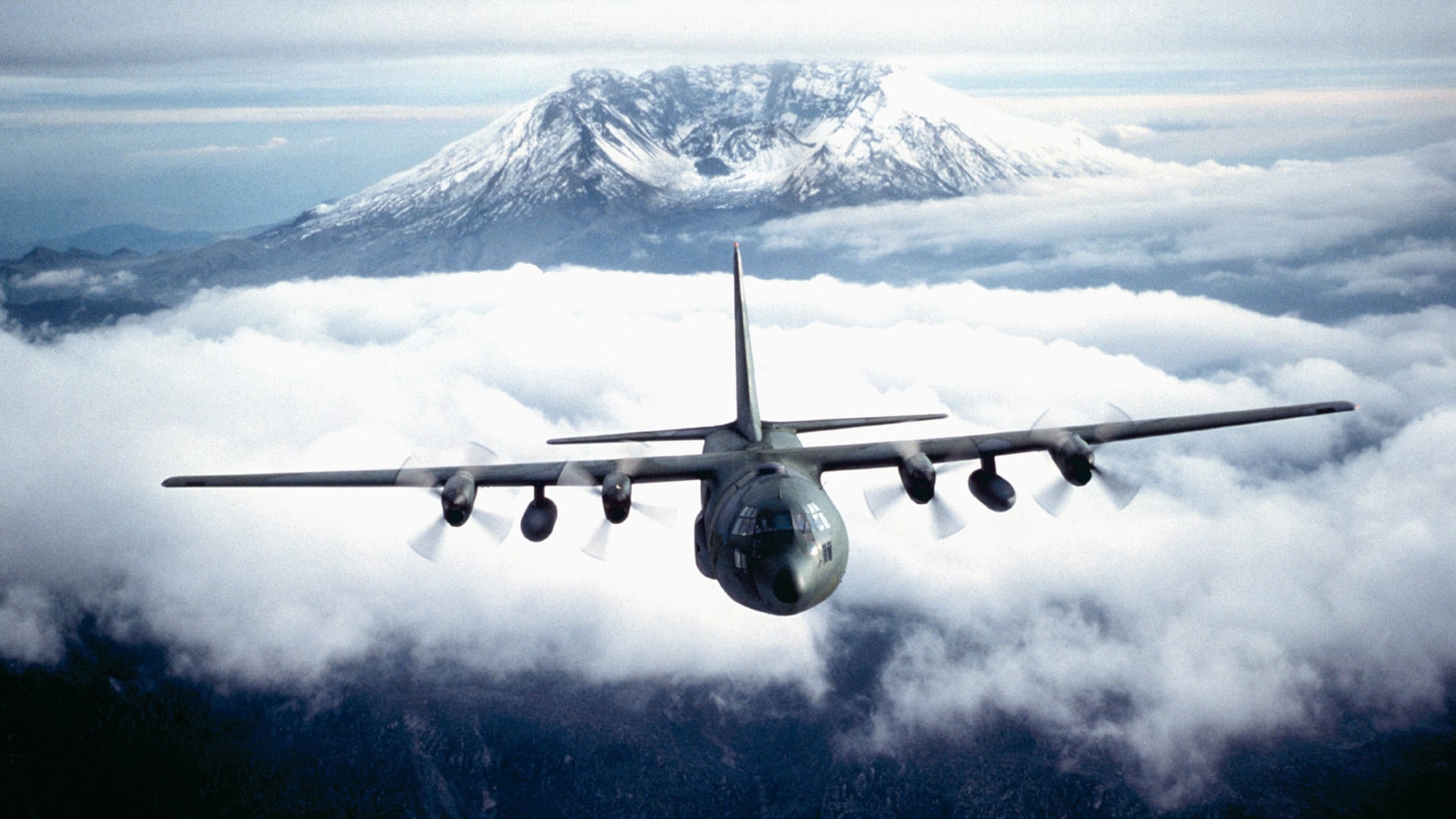

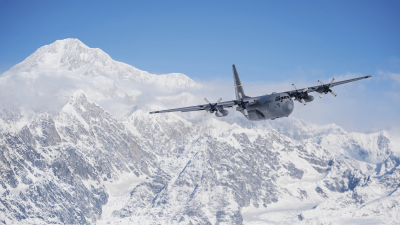
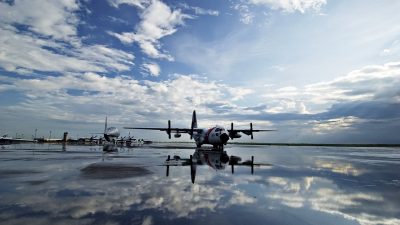

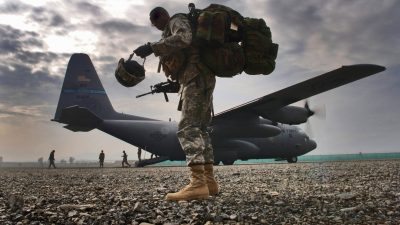

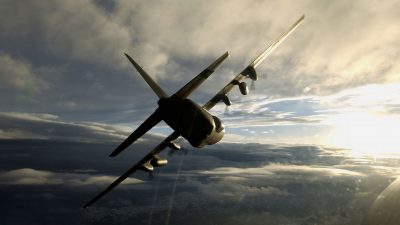


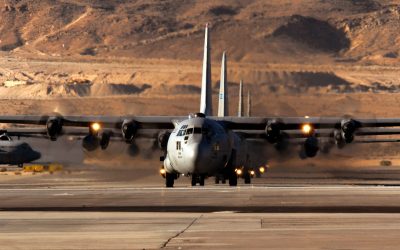
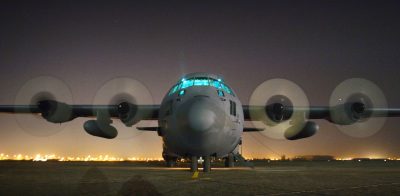
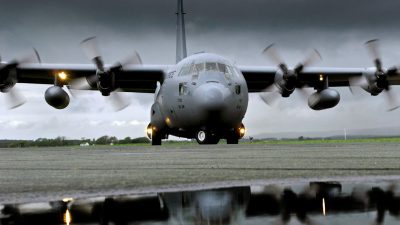
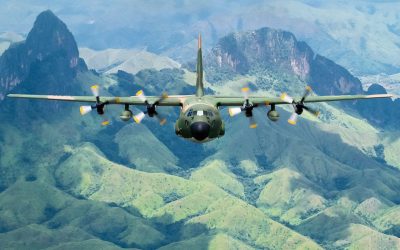
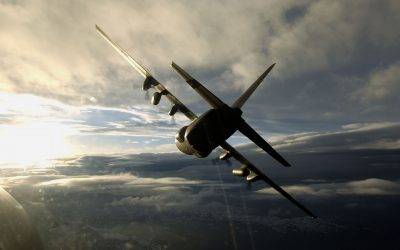
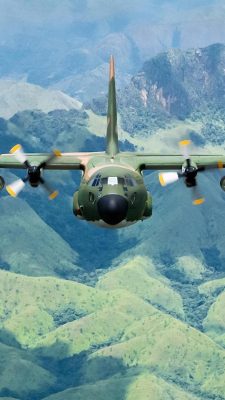
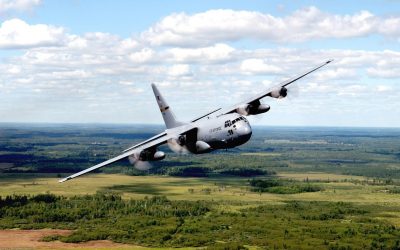


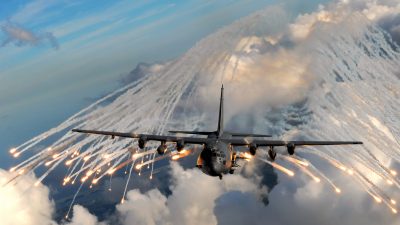

C-130 Hercules wallpapers for your PC, Android Device, Iphone or Tablet PC. If you want to download C-130 Hercules High Quality wallpapers for your desktop, please download this wallpapers above and click «set as desktop background». You can share this wallpaper in social networks, we will be very grateful to you.
Lockheed C-130 “Hercules” is designed according to the international project of a multi-purpose transport aircraft. The first contract for the production of aircraft in the C-130 variant was issued to the Lockheed company in September 1952. The first prototype YC-130 took off on August 23, 1954. The aircraft had a configuration that is now considered typical for military transport aircraft – highly located a wing for full utilization of the internal volume of the fuselage; and a hydraulically controlled loading and unloading ramp, which in the closed position forms a bevel of the lower surface of the tail fuselage.
Later about 60 variants of the C-130 were created. The main ones are C-130A, B, E, and N. In versions C-130A and B, 461 aircraft were built. Various versions of the C-130 aircraft are used not only for military transport, but also for special-purpose tasks (see the list of modifications). Aircraft with an additional letter in the designation, equipped with appropriate equipment. For example: E – for conducting electronic intelligence, control and communications; M – for special operations; K – aircraft refueling in the air: R – for reconnaissance; N – to ensure the search for crews of lowered spacecraft, etc.
EU-130E Corinite Solo
Designed to conduct electronic intelligence. The main external distinguishing features are large knife antennas under each wing of the wing and above forky and a horizontal knife antenna of smaller dimensions on each side of the rear fuselage. On the outer side of each underwing antenna and in the rear part of the tail assembly bullet-shaped containers with wire antennas towed behind the aircraft are several hundred meters long.
MS-130E
They are intended for hidden landing of airborne commando groups outside the enemy’s location line, their supply and evacuation from the enemy’s territory. The crew consists of 9-11 people. The airplanes are equipped with radar following the terrain, INS, collimator indicators, a system for dropping cargo from the aircraft and receiving them on board, a receiver-interrogator to determine the location of the object, radio stations of the decimeter and meter bands with frequency modulation encoded by a telephone communication system, a retractable container with IR system ALP-8 REP under the left wing console.
MS-130N
It is the first heavy aircraft of the Air Force in whose instrumentation equipment displays are widely used. They are adapted to read from information screens using night vision goggles; on the display screens on the image may be superimposed symbols. The following subsystems are also installed on the aircraft: dual INS, PC-front view system and specially designed for the MS-130H aircraft dual APQ radar; I70, operating in the frequency range X and Q and providing following the terrain, mapping and precise navigation. During the modification of the aircraft’s airframe, fuel tanks with foam coating, a modified loading and unloading system for dropping cargo when the aircraft was flying at high speed at low altitude and a receiver for refueling the aircraft with fuel in flight were installed.
C-130H-MR
It is a naval patrol and search and rescue version, based on the C-130N aircraft. The maximum take-off weight of the C-130H-MR is 70,310 kg, the maximum transported load is 18,630 kg.
The staff of the equipment installed and installed on request of the customer includes: Radar of the sea surface survey INS, Omega radionavigation system with a computer, device for dropping signal flares, loudspeaker system, dumping platform with rescue equipment, side-looking radar, video camera for low levels of illumination, target PC-detector, movie camera. The patrol time at an altitude of 1525 m is 2 h 30 min at a distance from the base of 3335 km and 16 h 50 min at a distance of 370 km.
At present, the production of the Hercules aircraft is conducted mainly in the C-130H variant. The fuselage of the C-130N type semi-monocoque aircraft is made of aluminum and magnesium alloys. In the cargo compartment, various heavy equipment can be stirred, in particular an F.6 tank trailer weighing 12080 kg, a 155 mm howitzer or a high-speed tractor, or up to five 463L loading platforms. At the rear of the cab is the main cargo door and a hydraulically driven loading and unloading ramp. For landing, there are two side doors behind the chassis fairing. Provided a place to rest a removable crew.
The wing is a high-placed, all-metal, two-spar construction. Chassis tricycle, with hydraulic drive. The main racks have 2 wheels installed in a tandem, and are retracted on the sides of the fairing.
The power plant consists of four single-shaft engines with an axial compressor and a maximum rotor speed. To improve the reliability of the aircraft, a number of changes have been made to the design of many systems and components. There are also differences between options for domestic use and export options.
C-130K
It is a variant of the C-130N aircraft, modified in accordance with the requirements of the British Air Force. The fuselage of the C-130K aircraft was extended by 4.57 m. This made it possible to transport 7 cargo platforms (instead of 5) or 4 Landrover trucks and 4 trailers (instead of 3 trucks and 2 trailers), or 128 soldiers, or 92 parachutists with full equipment, or 97 wounded on stretchers. The first aircraft of this batch was modified in 1979, after which it received the designation “Hercules” C Mk.Z.
Performance characteristics C-130 Hercules
– First flight: August 23, 1954
– Units produced: more than 2300 (for 2009)
Cost C-130 Hercules
– $ 30.1 million (C-130H, 1998), $ 66.5 million (C-130J)
Crew C-130 Hercules
– 2 pilots
Load capacity C-130 Hercules
– 18 955 kg (at + 2.5g)
– Passenger capacity: 72 soldiers or 64 paratroopers or 74 wounded on stretchers with two accompanying
Dimensions C-130 Hercules
– Length: 29.79 m
– Wingspan: 40.41 m
– Height: 11.84 m
– Wing area: 162.12 m²
– The coefficient of elongation of the wing: 10.1
– Wing load: 433.7 kg / m² (with normal take-off weight)
– Chassis track: 4.34 m
– Wing profile: NACA 64A318 wing root, NACA 64A412 ending
Dimensions of the cargo compartment
– Length: 12.19 m
– Width: 3.12 m
– Height: 2.74 m
– Useful volume: 128.9 m³
Weight C-130 Hercules
– Empty weight: 34,274 kg
– Weight curb: 53 230 kg (at + 2.5g)
– Normal take-off weight: 70 305 kg (with typical load)
– Maximum take-off weight: 79 380 kg
– Mass of fuel in internal tanks: 20,819 kg (+ 8506 kg in PTB)
– The volume of fuel tanks: 25552 l (+ 2 × 5220 l PTB)
Engines C-130 Hercules
– 4 × Rolls-Royce AE 2100D3
– Engine power: 4 × 4591 l. with. (4 × 3424 kW)
– Thrust: 194.6 W / kg (with a normal take-off mass)
– Airscrew: six-blade Dowty Aerospace R391
– Screw diameter: 4.11 m
Speed C-130 Hercules
– Maximum allowable speed: 700 km / h at 3050 m
– Maximum speed: 645 km / h
– Cruising speed: 628 km / h
– Stall speed: 185 km / h
– Rate of climb: 10.7 m / s
– Climbing time: 6100 m in 14 minutes.
– Run length: 1433 m (up to a height of 15 m)
– Run length: 777 m (from a height of 15 m with a landing weight of 58,967 kg)
Flight Range C-130 Hercules
– 5250 km (with a weight of 18,144 kg)
Practical ceiling C-130 Hercules
– 9315 m (with a flight weight of 66 680 kg)

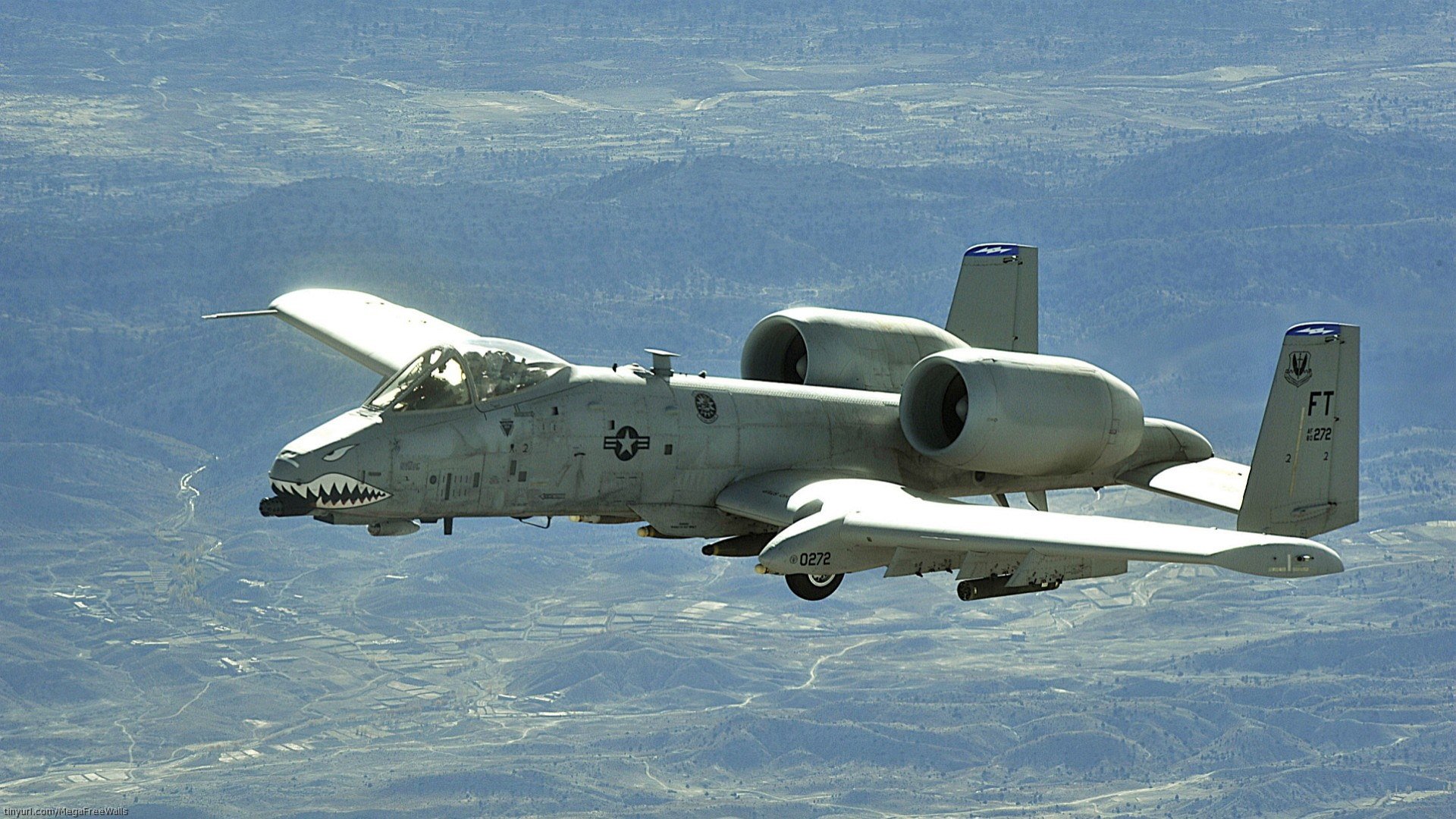

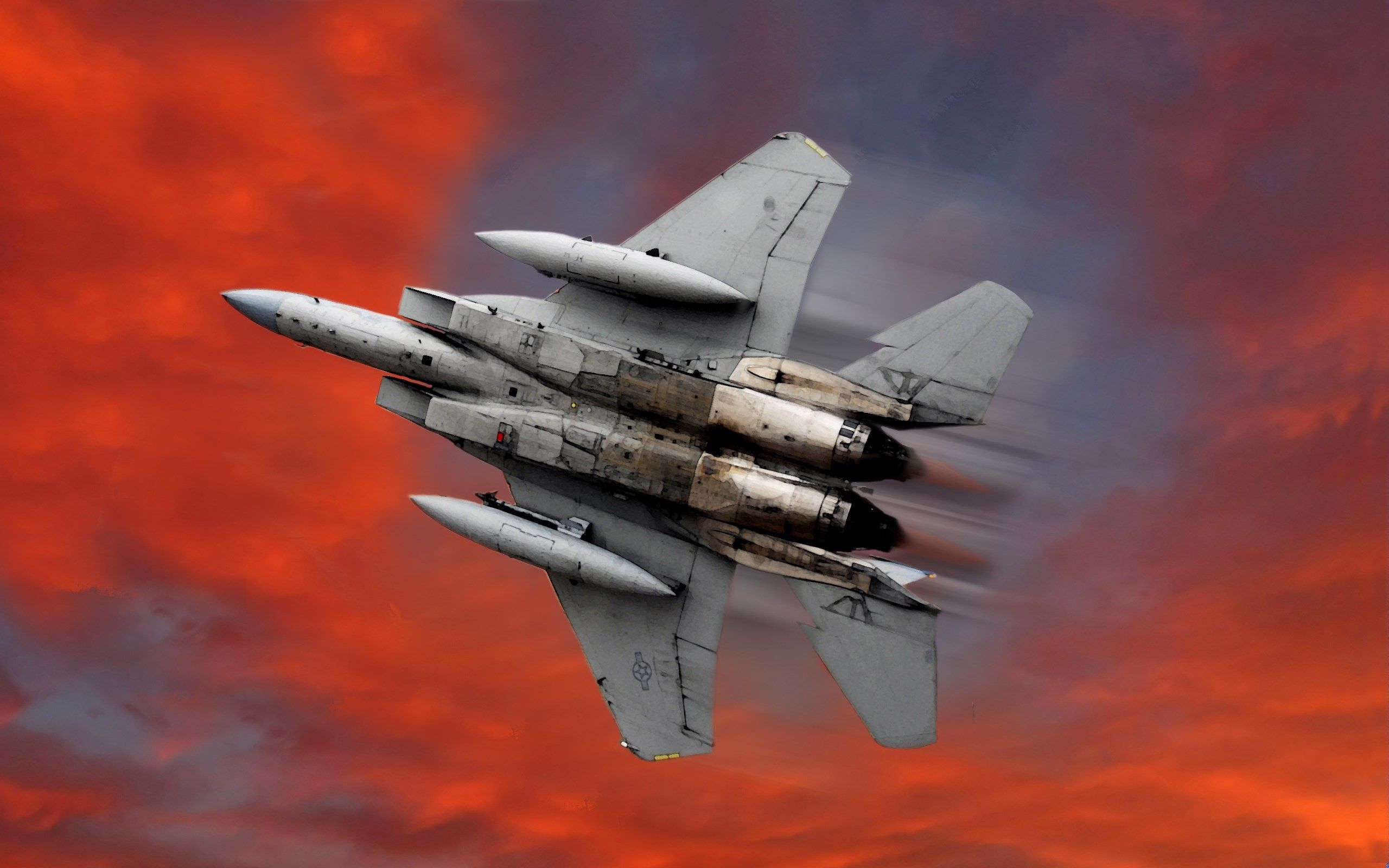
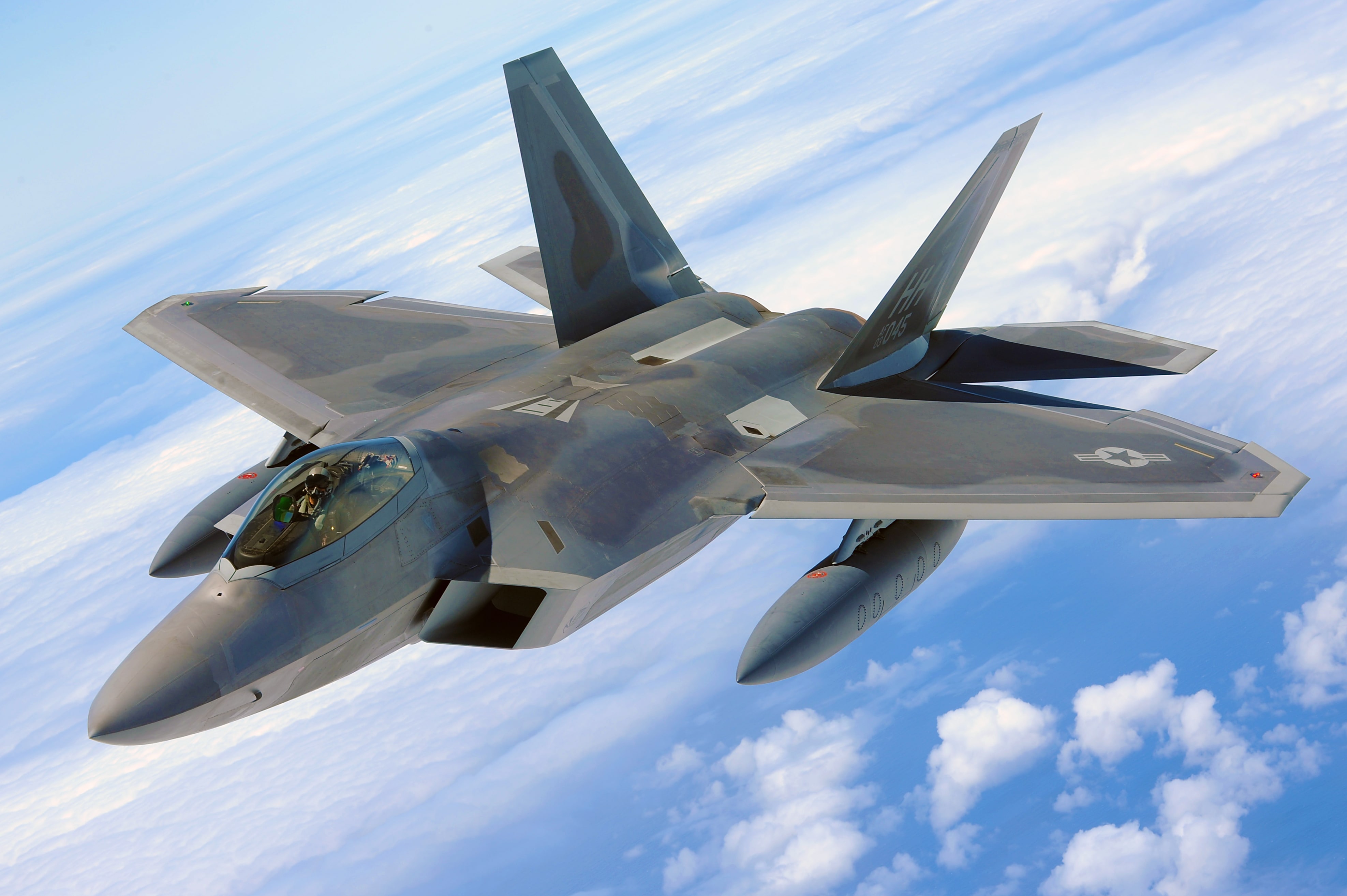


No Comment